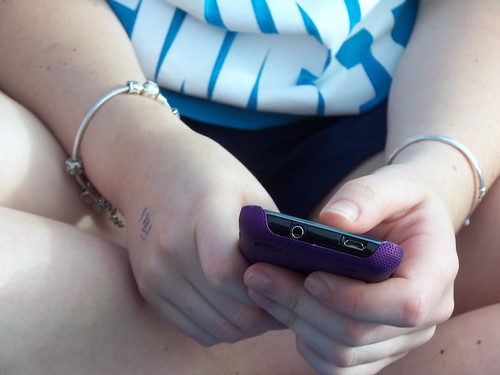Technology use among teens is at an all-time high. According to a 2015 report from the Pew Research Center, more than nine out of ten 13- to 17-year-olds go online every day, and almost a quarter of teens say they’re rarely offline. Just 12 percent of teenagers don’t have a cell phone. Teens have long used technology to communicate with one another, but today they’re also using it to access counseling services.
Technology Helping Teens Everywhere Get Help

Image via Flickr by Summer Sykes 11
A 2014 study published in the Journal of the Canadian Academy of Child and Adolescent Psychiatry found a range of technologies play a major role in the prevention, assessment, diagnosis, counseling, and treatment of young people with mental health concerns.
It also noted a shortage of people with counseling qualifications in remote and rural locations. Technology helps overcome this, as teenagers living in these locations can reach counselors via online means. However, it’s not just teenagers in isolated locales seeing the benefits of technology-based counseling.
The report reviewed academic studies and found the use of technology in counseling helps appeal to the way teens enjoy communicating, improves outcomes for patients and their families to the same degree as traditional counseling, and enhances a counselor’s ability to deliver aid.
Teleconferencing Aids Diagnosis and Treatment
Teleconferencing is one high-tech counseling solution proven to get results. During teleconferencing sessions, patients communicate with their counselors remotely using video chat software.
According to research cited by the Journal of the Canadian Academy of Child and Adolescent Psychiatry report, the diagnoses and treatment recommendations made by child psychiatrists via teleconferencing and face-to-face interviews are similar in 96 percent of cases. Another cited study indicated cognitive-behavioral therapy administered via teleconferencing to treat depressed children is as effective as face-to-face therapy. A similar reduction in symptoms is also noted.
While the outcomes are similar, key advantages of teleconferencing exist. Children and their parents both prefer teleconferencing, perhaps because it allows them to receive treatment in the comfort of their own homes. Teleconferencing also allows youths who don’t live close to a counselor specializing in teenage mental health concerns to receive treatment.
Teens Texting Counselors
It can be confronting for teenagers to speak to professionals about their problems, so SMS-based counseling services have been developed to help young people in need.
“Many New York teenagers aren’t yet ready to speak their pain aloud, but they might be ready to text someone who is able to help them,” Chiara de Blasio, the face of the NYC Teen Text program, told Digital Trends. It joins similar services like the nationwide Crisis Text Line and Chicago’s Text-a-Tip.
These services allow teens to conduct real-time SMS chats with qualified crisis counselors, explained Mobile Commons. If teenagers are in danger, counselors can involve emergency responders. A 2014 report published in the journal Personal and Ubiquitous Computing found that patients with mental health issues use text messaging more than apps, and that they typically feel comfortable texting mental health providers.
Teens’ natural love of technology makes it an ideal tool for the delivery of their mental health services.
